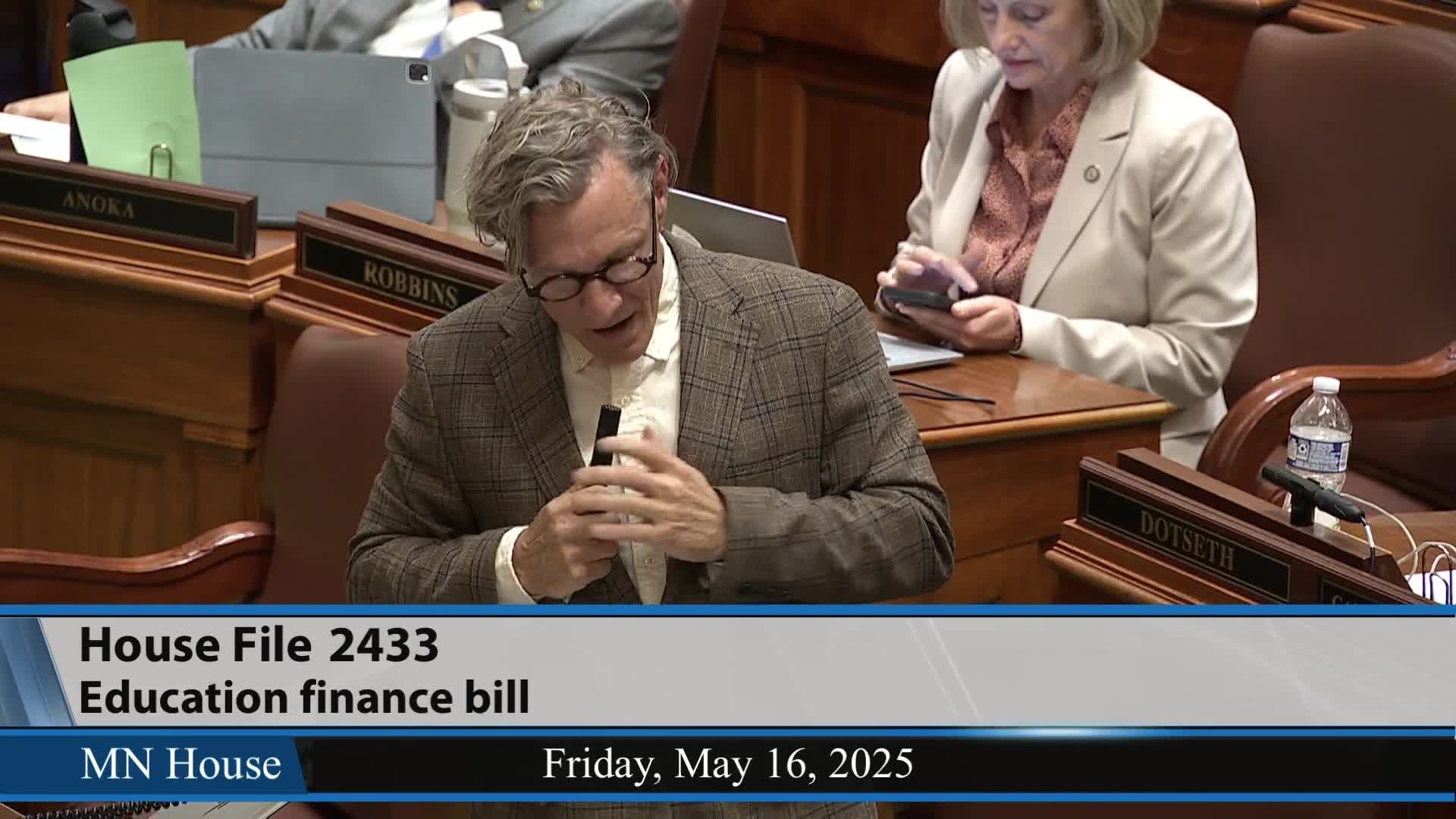Representative Rower presses for funding solutions amid teacher shortage challenges
May 18, 2025 | 2025 Legislature MN, Minnesota
This article was created by AI summarizing key points discussed. AI makes mistakes, so for full details and context, please refer to the video of the full meeting. Please report any errors so we can fix them. Report an error »

In a pivotal moment for Minnesota's education system, the House passed the education finance bill, HF2433, during a recent session that underscored the urgency of addressing the state's teacher shortage and funding challenges. As lawmakers gathered, the atmosphere was charged with a sense of responsibility and concern for the future of education in Minnesota.
One of the key discussions centered around the staggering $2.8 billion allocated in the bill, which does not account for additional costs that school districts face in contributing to higher wages for teachers. A representative voiced a stark warning: without decisive action, districts may struggle to afford the teachers they need, exacerbating an already critical shortage. The representative emphasized that while there are external challenges, such as federal regulations, there are also local solutions that can be pursued.
The conversation also touched on the contentious issue of funding mechanisms, including proposals for means testing universal lunch programs. Some lawmakers expressed frustration over the lack of opportunity to vote on amendments that could have redirected funds to support teachers more effectively. The representative lamented the missed chance to address these pressing issues directly, highlighting the importance of making tough decisions in the interest of the state's educational future.
Despite the challenges, there was a palpable sense of progress among lawmakers, who acknowledged the strides made in bipartisan efforts to support education. As the session concluded, the representative reflected on the importance of the bill, expressing a mix of hope and concern about its implications for teachers and students alike.
As Minnesota moves forward, the passage of HF2433 marks a significant step in the ongoing dialogue about education funding, teacher support, and the future of the state's schools. The coming days will be crucial as discussions continue, particularly regarding pension reforms and additional funding strategies that could further shape the educational landscape.
One of the key discussions centered around the staggering $2.8 billion allocated in the bill, which does not account for additional costs that school districts face in contributing to higher wages for teachers. A representative voiced a stark warning: without decisive action, districts may struggle to afford the teachers they need, exacerbating an already critical shortage. The representative emphasized that while there are external challenges, such as federal regulations, there are also local solutions that can be pursued.
The conversation also touched on the contentious issue of funding mechanisms, including proposals for means testing universal lunch programs. Some lawmakers expressed frustration over the lack of opportunity to vote on amendments that could have redirected funds to support teachers more effectively. The representative lamented the missed chance to address these pressing issues directly, highlighting the importance of making tough decisions in the interest of the state's educational future.
Despite the challenges, there was a palpable sense of progress among lawmakers, who acknowledged the strides made in bipartisan efforts to support education. As the session concluded, the representative reflected on the importance of the bill, expressing a mix of hope and concern about its implications for teachers and students alike.
As Minnesota moves forward, the passage of HF2433 marks a significant step in the ongoing dialogue about education funding, teacher support, and the future of the state's schools. The coming days will be crucial as discussions continue, particularly regarding pension reforms and additional funding strategies that could further shape the educational landscape.
View full meeting
This article is based on a recent meeting—watch the full video and explore the complete transcript for deeper insights into the discussion.
View full meeting
